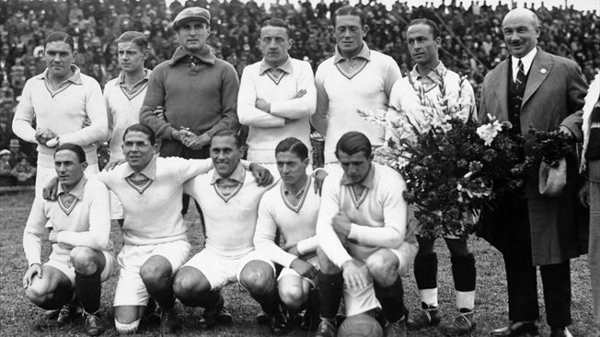Football's biggest villain?
In the football world, we have good guys and bad guys - like in any other way of life. We've heard of the antics of people like George Best, and the deviant moral compass of people like Ryan Giggs or Joey Barton. However, this article brings to light someone who was rotten in the mind, and arguably football's biggest villain - Alexandre Villaplane. Unlike the untouchables like the "Black Pearl" Pele, the legends enshrined in collective adoration, Villaplane's legacy pulsates with a dark energy, a stark reminder of the human capacity for both brilliance and barbarity.
Born in Algeria, Villaplane was a midfield maestro, a sorcerer with the ball, his talent defying colonial barriers to propel him to the French national team. It was at local club Nîmes that he would first earn nationwide admiration – not only was he the sort of high-energy, tough-tackling performer whom fans have always loved, but he was also hailed as the best header of the ball in the country and one of the most perceptive passers of his generation. He won the first of his 25 France caps against Belgium in 1926 and was appointed captain just before the inaugural World Cup. Leading France out against Mexico in Montevideo was, he said, "the happiest day of my life". The "Spielmacher von Weltklasse," as Le Monde declared, was football royalty.
In the football world, we have good guys and bad guys - like in any other way of life. We've heard of the antics of people like George Best, and the deviant moral compass of people like Ryan Giggs or Joey Barton. However, this article brings to light someone who was rotten in the mind, and arguably football's biggest villain - Alexandre Villaplane. Unlike the untouchables like the "Black Pearl" Pele, the legends enshrined in collective adoration, Villaplane's legacy pulsates with a dark energy, a stark reminder of the human capacity for both brilliance and barbarity.

In June 1940 Paris fell to the Nazis. The occupation spelt doom and despair to many, but for some it spawned new opportunities. At the beginning of World War II, Villaplane became involved in the Parisian black market and in racketeering the local Jewish population. Through his criminal background, he came to the attention of the French Carlingue, an organisation formed by the German Reich Security Main Office to conduct counter-insurgency operations against the French Resistance. The group, which was made up of collaborating criminals, was known colloquially as the French Gestapo. It was jointly run by two Parisian gangsters, Henri Lafont and Pierre Bonny. Members utilised their criminal expertise and networks for the Nazi security services in occupied France and Vichy. Villaplane specialised in racketeering gold merchants.
Throughout 1943, French resistance to Germany intensified. The local Gestapo was ordered to help exterminate the rebels. Since Hitler had been funding an Arabic-language newspaper that depicted the Führer as the great liberator, intent on freeing downtrodden peoples from the twin evils of colonialism and communism, Lafont had the idea of reinforcing the German and collaborationist ranks by forming a squadron of fighters drawn from the immigrant population. In February 1944 the German authorities gave the go-ahead. The Brigade Nord Africain (BNA) was set up with instructions to cleanse the Périgord region. At its helm was Villaplane, promoted to the position of SS sub-lieutenant.
Villaplane's unit quickly became notorious for its cruelty. On 11 June 1944, for instance, they captured 11 resistance fighters in Mussidan, a small village in the Dordogne. Aged 17 to 26, the maquisards were marched to a ditch and shot. As well as giving the death order, Villaplane is said to have pulled one of the triggers.

"They pillaged, raped, robbed, killed and teamed up with the Germans for even worse outrages, the most awful executions," said the prosecutor at Villaplane's trial after Paris had been liberated. "They left fire and ruin in their wake. A witness told us how he saw with his own eyes these mercenaries take jewels from the still-twitching and bloodstained bodies of their victims. Villaplane was in the midst of all this, calm and smiling. Cheerful, almost invigorated."
Despite the barbarity of the BNA, resistance fighters became more numerous. Villaplane began to realise that Germany may not win the war. He tried to switch sides, but it was too late, and he had committed too many sins to become prodigal. In August 1944, Allied forces closed in and the heads of the French Gestapo were tracked down and put on trial. Then sentenced to death. On the day after Christmas in 1944, Villaplane, Lafont, Bonny and five others were taken to Fort de Montrouge on the outskirts of the city and shot dead.


Villaplane est l’un des plus grands méchants que j’ai vu. son histoire devrait avoir de la lumière